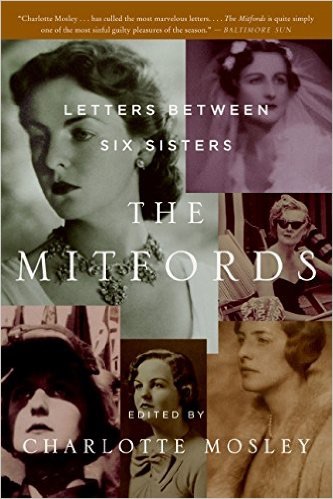The Mitfords: Letters Between Six Sisters
by Charlotte Mosley, ed.
Lord and Lady Redesdale had seven kids. The boy was popular and well-enough liked, and died in Burma during the war. The six daughters were a handful.
- was Nancy (Naunce), gorgeous and a terrific novelist. She wrote equally terrific letters and had a fatal tendency to fall for gay men.
- was Pamela (Woman), who had childhood polio, a brief, bad marriage, was gay, and lived a retired country life. She is the only one of the sisters who didn’t publish books, but she could write, too.
- was Diana (Honks), the beauty of her age. She was the model for one of the muses in the floor of the National Gallery, and much else beside. After another brief, bad marriage, she married Oswald Mosley, leading man of British Fascism.
- was Unity (Birdy or Boud), who shared a room with #5. They didn’t get along, and drew a chalk line down the middle of the room. Unity filled her side of the room with pictures of brave Fascists; her sister plastered her walls with Lenin and company. In the 30s, Unity went to Germany and fell deeply in love with Hitler, shooting herself when England declared war on Germany.
- was Jessica (Decca), who eloped with a communist, moved to California, and wrote important exposés and was a leader in the civil rights movement.
- was Deborah (Debo), who became the Duchess of Devonshire, invented the stately home industry, and remained on speaking terms with all six sisters throughout the course of her life.
They knew everyone worth knowing, pretty much. They seem to have had uniformly bad taste in men, but never let that stop them. They wrote a lot of letters, many of them brilliant.
Charlotte Mosley – Diana’s daughter in law – selects and edits these expertly. The correspondence is huge, so even selected letters leaves us with a brick. Every letter has wonderful footnotes that identify almost everyone mentioned – a task made nearly impossible by the sisters’ fondness for nicknames and private jokes. The Queen Mother, for example, is always “Cake,” apparently because, at a wedding in the 1930s, she was strikingly enthusiastic when told that the couple were going to cut the wedding cake.
